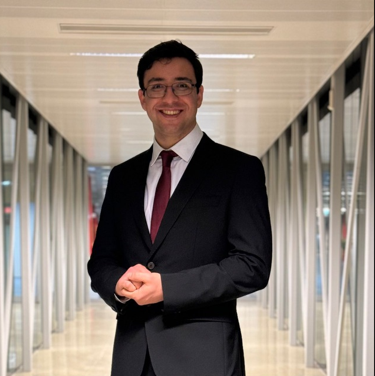Microbubble acoustic cavitation and soft matter
Ali Rezaei is a PhD student in the department Physics of Fluids. (Co)Promotors are prof.dr. M. Versluis; prof.dr.ir. D. Fernandez Rivas and dr. G.P.R. Lajoinie from the faculty Science & Technology.
 The aim of this thesis is to advance our understanding of the dynamics of ultrasound-driven microbubbles, with a particular focus on their interaction with viscoelastic media and confined environments. Through the investigation of both theoretical models and experimental data, we investigate to deepen knowledge of microbubble resonance, scattering, and oscillation in various configurations, including bulk media and microchannels. The insights gained from these studies are intended to ultimately optimize the use of microbubbles in clinical practice, enhancing the accuracy of ultrasound imaging and the effectiveness of ultrasound mediated therapies.
The aim of this thesis is to advance our understanding of the dynamics of ultrasound-driven microbubbles, with a particular focus on their interaction with viscoelastic media and confined environments. Through the investigation of both theoretical models and experimental data, we investigate to deepen knowledge of microbubble resonance, scattering, and oscillation in various configurations, including bulk media and microchannels. The insights gained from these studies are intended to ultimately optimize the use of microbubbles in clinical practice, enhancing the accuracy of ultrasound imaging and the effectiveness of ultrasound mediated therapies.
After a brief introduction to bubble dynamics and viscoelastic tissue models, Chapter 2 investigates how microbubble oscillation affects the rheological properties of the surrounding medium. The mechanical properties of tissues at the high strain rates (106 s −1) typically driven by microbubbles are largely unknown. To address this, the chapter explores the rheology of polyacrylamide (PAM) hydrogels which are used as tissue-mimicking materials, using a microbubble as a probe. By analyzing ultra-high-speed imaging data and fitting them to simulations of coated bubbles, the shear moduli and viscosities of soft and stiff PAM hydrogels were extracted and compared to their low-frequency counterparts. The strain rate strongly affects the viscosity but the elastic modulus does not show a big deviation from low-frequency measurements.
In Chapter 3, building on the understanding that the medium’s elastic modulus of these hydrogels remains the same order in the 106 s −1 range as low frequency range, the focus shifts to the interplay between the microbubble’s phospholipid coating and the shear modulus of the viscoelastic medium. The scattered pressure from coated microbubbles in the viscoelastic medium is modeled using a Rayleigh-Plesset type equation, the chapter examines the effects of elastic modulus on resonance frequency, harmonics generations, and sub-harmonics oscillations of microbubbles.
These simulations set the stage for Chapter 4, where the effect of the surrounding medium is further explored experimentally. We introduce a microbubble spectroscopy scattering method. With this method, we measure the correlation between the elastic modulus of hydrogels and the resonance frequency of phospholipid coated microbubbles, quantify damping experienced by microbubbles and finally show how the gels affect the stability of the microbubbles.
Chapter 5 explores the behavior of microbubbles when confined within small blood vessels which is a more complex but more realistic configuration to represent bubbles flowing in blood capillaries. Using ultra-high-speed imaging, the chapter examines the dynamics of microbubbles in silicone polymer microchannels with diameters ranging from 15 to 100 µm. We measure the decrease in resonance frequency as the diameter of the confining channel becomes smaller as well as the damping experienced by the bubbles. The optical recording also allows us to directly have the information on bubble radial oscillation and compare it with the theoretical models.
These insights enhance our understanding of how ultrasound-driven microbubbles interact with soft matter, paving the road toward more refined clinical models and greater precision in future therapeutic applications.

